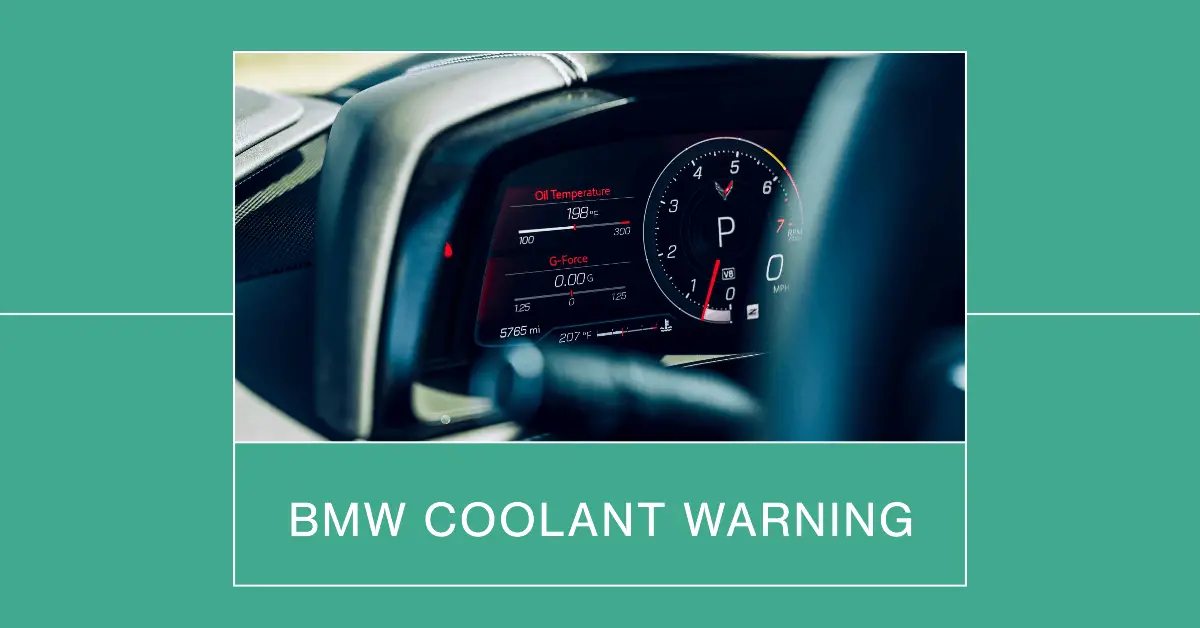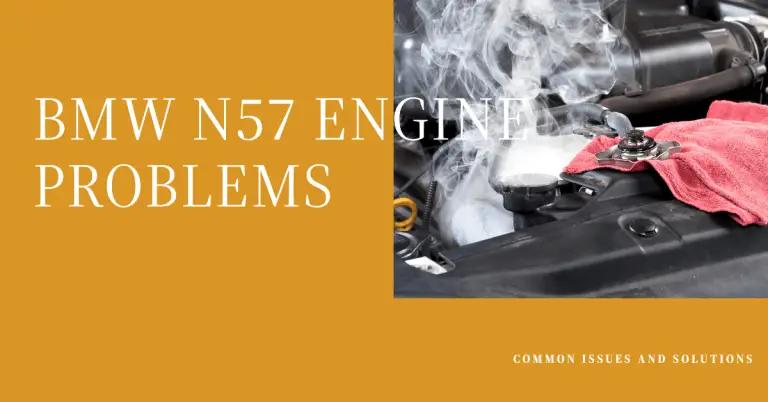BMW Coolant Light On and Off: Reasons and Fixes for Cycling
Driving your BMW down the highway when suddenly an ominous warning light illuminates on your dash – the coolant temperature light. This indicator means your engine is starting to overheat, which could lead to major mechanical damage if left unchecked. Even more troubling, the light cycles on and off intermittently rather than staying on solid.
What’s causing your BMW coolant light to randomly turn on and off, and how can you properly diagnose and repair this issue?
In most cases, a fluctuating coolant light indicates low fluid levels, small leaks in the cooling system, or a faulty temperature sensor that is sporadically triggering the light. Thoroughly inspecting the components, testing for leaks, and topping off the coolant can typically resolve the underlying problem.
This article will explore the most common reasons behind a BMW coolant light that cycles on and off, how to accurately diagnose the cause, and the best ways to fix intermittent problems related to engine overheating. We’ll also provide tips on preventative maintenance to stop issues before they start. Read on for a comprehensive guide to decoding and resolving your sporadic coolant warning light.
What Does the BMW Coolant Light Mean?
Before diving into the reasons behind an inconsistent coolant indicator, let’s cover the basics of what this dashboard light means in your BMW:
- The coolant light, which may be yellow or red depending on model, illuminates when the engine coolant temperature gets too high.
- It signals that the coolant level is low or the system is not circulating enough fluid to properly cool the engine.
- If the light stays on solid, it indicates a consistent overheating issue. When it cycles on and off, this points to a temporary or intermittent problem.
- Driving with the light on solid for any length of time risks major engine damage from overheating.
- The coolant sensor measures the temperature of the fluid and will trigger the light when it gets above a set threshold.
So in summary, this warning light turning on informs the driver that the engine coolant is too hot and needs to be addressed promptly to avoid catastrophic failure. The on-off cycling suggests the overheating is sporadic rather than constant.
Common Reasons for BMW Coolant Light Fluctuations
A BMW coolant indicator that blinks on and off is almost always caused by one of several issues. Here are the most common culrpits behind an inconsistent or erratic temperature warning light:
1. Low Coolant Levels
The most obvious and prevalent cause of coolant light activation in BMWs is running low on engine coolant in the reservoir. Low fluid levels lead to overheating, which then triggers the warning light on the dash.
Topping off the reservoir to proper levels can temporarily turn off the light again, but if there is an underlying leak or consumption problem, the levels will continually drop and cause the indicator to cycle on and off. Be sure to visually check the see-through reservoir while engine is cold and top off if needed.
2. Coolant Leaks
One of the primary ways coolant levels get low over time is from leaks in the system. Both external and internal leaks will allow precious fluid to escape, reducing cooling capacity and turning on the temperature warning light.
External leaks could originate from hoses, the reservoir, water pump, thermostat housing, radiator, or anywhere else in the cooling system. These leaks leave obvious dripping on the ground. Internal leaks are less visible but allow coolant to mix with engine oil. In either case, enough loss of fluid will lead to the erratic coolant light.
3. Faulty Coolant Temperature Sensor
The coolant sensor is responsible for measuring the current temperature of the fluid and signaling to your dashboard light to turn on when it gets too hot. If this sensor is defective, it can provide incorrect temperature readings and trigger the light prematurely or sporadically.
A bad sensor that inaccurately reads hot then cold again will cause the warning indicator to cycle on and off even if actual coolant temperature is fine. Replacing a faulty sensor often resolves intermittent coolant light problems.
4. Bad Water Pump
The water pump circulates engine coolant through the system to prevent overheating. If it is worn out or failing, the pump may not move fluid effectively. This lack of proper circulation allows the engine to heat up and turn on the warning light.
As the car continues moving, airflow cools the engine back down and temporarily turns the light off. The inconsistent pumping of a bad water pump mimics the on-off light patterns. Replacing the part restores normal coolant flow.
5. Thermostat Failure
A stuck closed or open thermostat disrupts the engine’s careful temperature regulation. This important part should open to allow coolant flow once warm and close to retain heat when cold.
If the thermostat sticks open, it will inhibit the engine from reaching optimum temperature. If it sticks closed, it can lead to overheating issues. An erratic thermostat that opens and closes inconsistently will mimic the random on and off coolant light behavior.
How to Diagnose BMW Coolant Light On and Off?
When you notice your BMW’s coolant indicator cycling on and off, don’t ignore it – promptly diagnose the root cause. Here is a systematic process to accurately pinpoint issues:
- First, pop the hood when the engine is fully cool and check the transparent plastic reservoir. If the fluid level is low, top it off and monitor if the light stays off. Low levels may be the only problem.
- Thoroughly inspect all coolant hoses, gaskets, seals, and connections for any sign of leaks. Look for green deposits or wetness. Also check the ground under the engine for drips.
- Use a pressure tester kit to pressurize the cooling system and check for any external leaks. Most kits connect at the radiator cap opening.
- Check your coolant sensor resistance values and operation per factory specifications. If readings are off, the sensor may be defective and require replacement.
- Carefully monitor the engine temperature during a test drive, with the heater on, to observe if/when the light activates. Note any temperature fluctuations.
- Consider having a diagnostic scan tool check for any stored trouble codes related to the coolant system. BMW-specific scanners can read useful data.
Methodically following these diagnostic steps should reveal the root cause of your intermittent coolant warning light. Whether it is low fluid, leaks, a bad sensor, or faulty thermostat, thorough testing is key.
Fixing BMW Coolant Light Intermittent Issues
Once properly diagnosed, most BMW coolant system problems that cause erratic low coolant warnings can be repaired straightforwardly:
- Top off the coolant reservoir – If low fluid is determined as the culprit, topping up the reservoir to correct levels can permanently fix the warning light. Use the recommended BMW blue coolant.
- Replace leaky components – Any external leaks in hoses, gaskets, the radiator, reservoir, or water pump must be addressed. Replace the leaking parts and safely dispose of spilled coolant.
- Replace faulty temperature sensor – If electrical and resistance testing points to a bad sensor, replace it with a new BMW OEM coolant sensor. Avoid cheap aftermarket units.
- Flush entire system – With leaks or overheating, flushing the system helps get out contaminated, acidic, or old coolant. Refill with fresh fluid.
- Repair internal leaks – Internal leaks require more extensive work to fix, including resealing the head gasket. But it eliminates coolant mixing into the oil.
- Water pump replacement – A bad water pump that doesn’t properly circulate fluid needs replacement to prevent further overheating.
Comprehensively addressing low fluid levels, leaks, component failures, or sensor issues according to each specific diagnosis will reliably fix BMW intermittent coolant light problems. Don’t ignore warning signs of issues.
Preventing BMW Coolant System Problems
They say an ounce of prevention is worth a pound of cure. That’s certainly true when it comes to maintaining your BMW cooling system in top shape and avoiding warning light headaches. Here are some tips:
- Check your coolant reservoir level at each oil change and top up if needed. Look for any residues around the cap.
- Scan all components like hoses, pumps, thermostat housing, and radiator for signs of seepage or soggy residues indicating a leak. Catch early.
- Replace the coolant fluid per the maintenance schedule recommended in your owner’s manual – usually every 3-5 years.
- Stick to the factory advised coolant for your BMW model, either blue or pink fluid. Avoid mixing types.
- Immediately address any drips, leaks, or steam you notice from the cooling system. Don’t delay diagnosis and repair.
- Take flashing coolant lights seriously and diagnose ASAP to understand root cause, not just topping off fluid.
- Consider having a cooling system pressure test done annually to check for leaks during maintenance.
By closely monitoring your BMW engine coolant system and quickly addressing any low fluid levels or leaks, you can go a long way towards preventing many common overheating issues and keep that pesky warning light off your dash.
Conclusion
Seeing your BMW coolant warning indicator randomly cycling on and off should raise some red flags about potential underlying issues. In most cases, low fluid levels, small leaks, or a faulty sensor are the root of the problem.
Thoroughly inspect the cooling system, check for leaks, test the sensor’s operation, and monitor the engine temperature fluctuations that trigger the erratic light. Fix any issues discovered according to best repair practices. Topping off fluids, fixing leaks, and replacing damaged components will typically resolve the causes of intermittent overheating.
With vigilant preventative maintenance and immediate attention to any leaks or warning lights, BMW owners can keep their cooling systems in top shape and engine operating temperature optimized. Don’t ignore an inconsistent coolant indicator – leverage the advice in this article to properly diagnose and repair your BMW.







